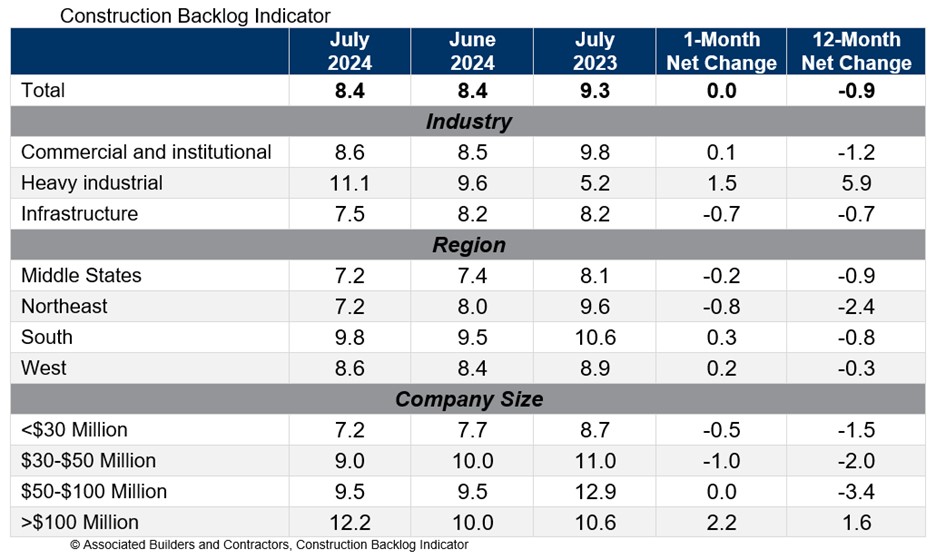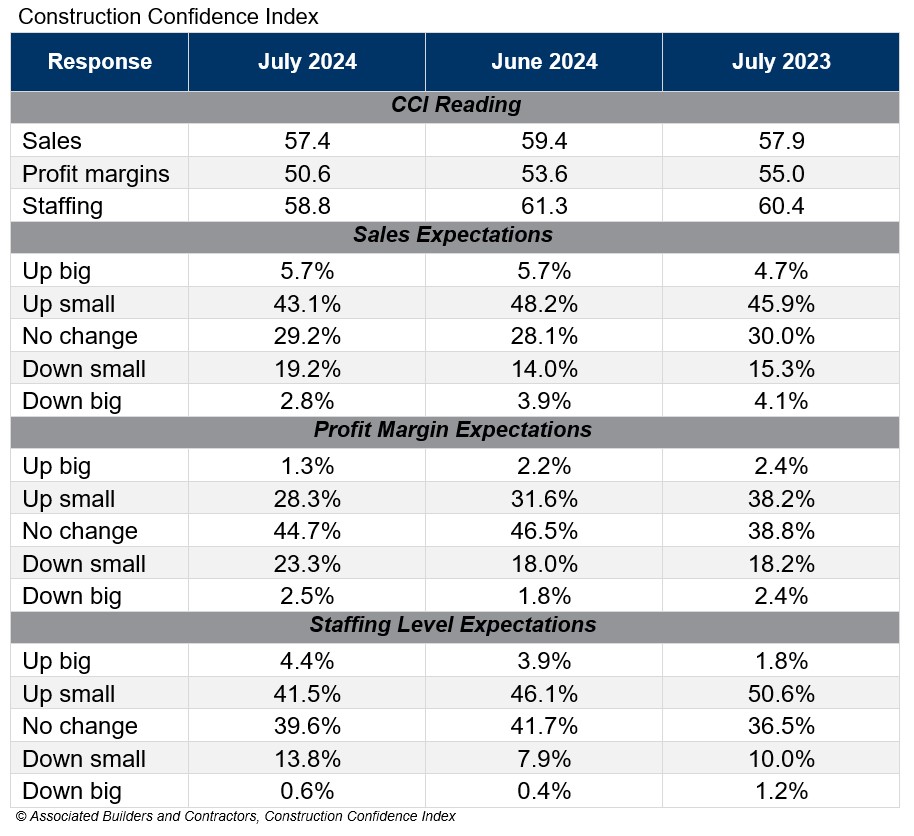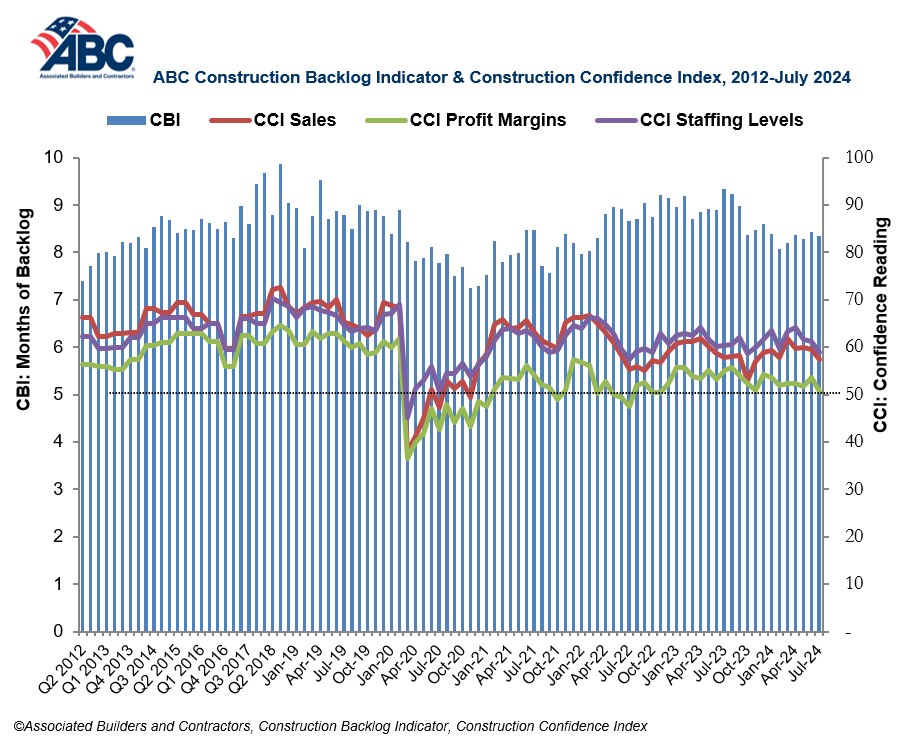Associated Builders and Contractors reported today that its Construction Backlog Indicator held steady at 8.4 months in July, according to an ABC member survey conducted July 22 to Aug. 6. The reading is down 0.9 months from July 2023.
View the full Construction Backlog Indicator and Construction Confidence Index data series.
Only the largest contractors, those with greater than $100 million in annual revenues, have longer backlog than one year ago. On a monthly basis, the decline in backlog was driven by declines among the smallest contractors, those with less than $50 million in annual revenue.
ABC’s Construction Confidence Index readings for sales, profit margins and staffing levels fell in July. All three readings remain above the threshold of 50, indicating expectations for growth over the next six months.

“Contractor confidence regarding profit margins now stands at the lowest level since November 2022, which comes as little surprise," said ABC Chief Economist Anirban Basu. “There are now strong indications that elevated interest rates have finally taken their toll on a number of privately financed construction segments as well as the broader economy.
“While inflation has moderated in recent months, construction materials prices remain almost 40% above pre-pandemic levels,” said Basu. “With construction spending down for the past two months, the industry eagerly awaits lower interest rates. Given recent economic turmoil, the Federal Reserve will begin cutting rates at its September meeting.”


Related Stories
| Aug 11, 2010
2009 Judging Panel
A Matthew H. Johnson, PE Associate Principal Simpson Gumpertz & HegerWaltham, Mass. B K. Nam Shiu, SE, PEVP Walker Restoration Consultants Elgin, Ill. C David P. Callan, PE, CEM, LEED APSVPEnvironmental Systems DesignChicago D Ken Osmun, PA, DBIA, LEED AP Group President, ConstructionWight & Company Darien, Ill.
| Aug 11, 2010
Inspiring Offices: Office Design That Drives Creativity
Office design has always been linked to productivity—how many workers can be reasonably squeezed into a given space—but why isn’t it more frequently linked to creativity? “In general, I don’t think enough people link the design of space to business outcome,” says Janice Linster, partner with the Minneapolis design firm Studio Hive.







